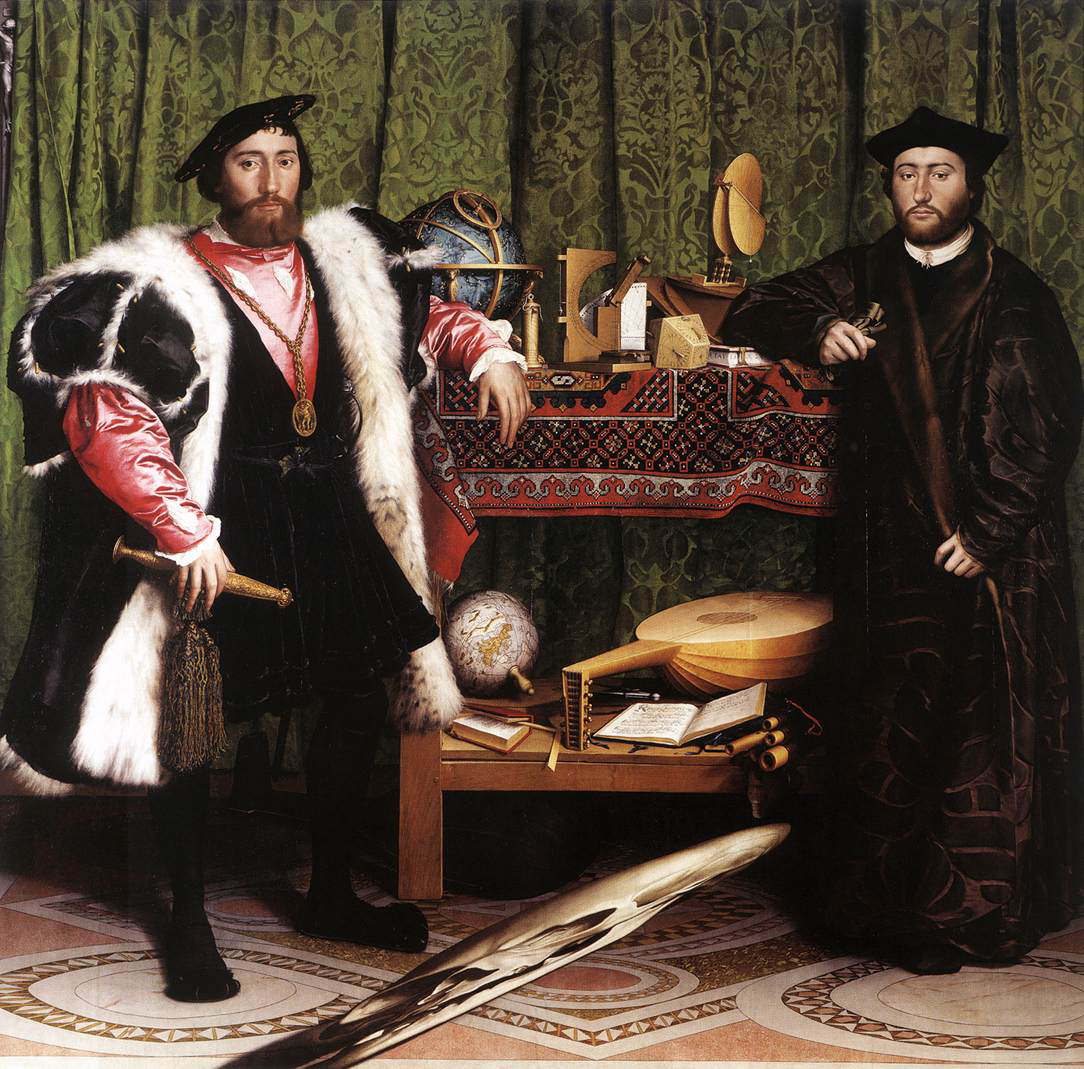


When we first approach the painting, we marvel at Holbein's mastery with the representation of appearances. We become convinced of the variety of textures, the remarkable clarity of details, the plausibility of spatial relationships, and the vividness of the likenesses of the men. This mastery of the techniques of illusionistic painting is the artistic equivalent to the accomplishments of reproducing the world in the mind of man through the use of discursive reason. Holbein has clearly set the painting for the morning of April 11, 1533. This comfortable view is unsettled by the observation of the anamorphic skull which, in order to be seen correctly, demands an abandonment of the rest of the painting. We become aware of other disquieting details: the lute with a broken string and the polyhedral sundial whose faces record different times. Other details suggest another level of understanding. The half-hidden crucifix, the cylindrical sundial set for Good Friday, and the Lutheran hymnbook with its likely reference to the doctrine of justification by faith lead us to Christ as that necessary bridge from our mortality to immortality. Intellectual vision is only possible through Christ. For all its attention to materiality, The Ambassadors' true subject matter is what is unrepresentable and unknowable --God. What is represented is a network of signs that leads us to this true reality hidden in this world of appearances. As Nicholas of Cusa writes, God is "hidden from the wise," and is "...not knowable in this world, where by reason and by opinions or by doctrine we are led, with symbols, through the more known to the unknown." It is only through faith in Jesus that the mysteries of God are revealed. "Through faith we are caught up, in simplicity, so that being in a body incorporeally (because in spirit) and in the world not mundanely but celestially we may incomprehensibly contemplate Christ above all reason and intelligence."*
The Ambassadors can be compared to Erasmus' discussion of the Sileni Alcibiadis in his Adages:
What is most excellent in any way is always the least showy. In trees, it is the flowers and leaves which are beautiful to the eye: their spreading bulk is visible far and wide. But the seed, in which lies the power of it all, how tiny a thing it is! how secret, how far from flattering the sight or showing itself off! Gold and gems are hidden by nature in the deepest recesses of the earth. Among what they call the elements, the most important are those furthest removed from the senses, like air and fire. In living things, what is best and most vital is secreted in the inward parts. In man, what is most divine and immortal is what cannot be seen.... Lastly, in the universe, the greatest things are those not seen, like substances, which are called separate. And at the highest point of these there stands what is furthest removed from the senses, namely God, further than our understanding or our knowing, the single source of all things.*
Holbein asks us to look beyond his masterfully painted world of appearances because, in Erasmus's words, "...under these veils, great heaven what wonderful wisdom lies hidden." "If you crack the nut, you find inside that profound wisdom, truly divine, a touch of something which is clearly like Christ Himself."* In The Praise of Folly , Erasmus, referring again to Alcibiades' Sileni, writes: "...what at first sight seems to be death, if you view it narrowly may prove to be life; and so the contrary."* Or, to paraphrase Nicholas of Cusa, we are asked to see invisibly the invisible truth which is hidden behind the surface of appearances.*
